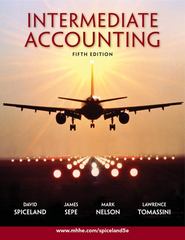Question
On December 30, 2009, a bomb blast destroyed the bulk of the accounting records of the Horne Division, a small one-product manufacturing division that uses
On December 30, 2009, a bomb blast destroyed the bulk of the accounting records of the Horne Division, a small one-product manufacturing division that uses standard costs and flexible budgets. All variances are written off as additions to (or deductions from) income; none is prorated to inventories. In addition, the chief accountant mysteriously disappeared. You have the task of reconstructing the records for the year 2009. The general manager has said that the accountant had been experimenting with both absorption costing and variable costing. The records are a mess, but you have gathered the following data (simplified here to save computations) for 2009: Cash, December 31, 2009 $ 10 Sales 128,000 Actual fixed indirect manufacturing costs 21,000 Accounts receivable, December 31, 2009 20,000 Standard variable manufacturing costs per unit 1 Variances from standard for all variable manufacturing costs 5,000 U Operating income, absorption-costing basis 14,400 Accounts payable, December 31, 2009 18,000 Gross margin, absorption costing at standard (before deducting variances) 22,400 Total liabilities 100,000 Unfavorable spending variance, fixed manufacturing costs 1,000 Notes receivable from chief accountant 4,000 Contribution margin, at standard (before deducting variances) 48,000 Direct material purchases, at standard prices 50,000 Actual marketing and administrative costs (all fixed) 6,000 Required: Using a word processor or spreadsheet, show your work that supports your answers. 1 Operating income on a variable-costing basis. 2 Number of units sold. 3 Number of units produced. 4 Number of units used as the denominator level to obtain fixed manufacturing overhead allocation rate per unit on absorption-costing basis. 5 Did inventory (in units) increase or decrease? Explain. 6 By how much in dollars did the inventory level change (a) under absorption costing? (b) under variable costing? 7 Variable manufacturing cost of goods sold, at standard cost. 8 Manufacturing cost of goods sold at standard cost, absorption costing. 
Step by Step Solution
There are 3 Steps involved in it
Step: 1

Get Instant Access to Expert-Tailored Solutions
See step-by-step solutions with expert insights and AI powered tools for academic success
Step: 2

Step: 3

Ace Your Homework with AI
Get the answers you need in no time with our AI-driven, step-by-step assistance
Get Started


